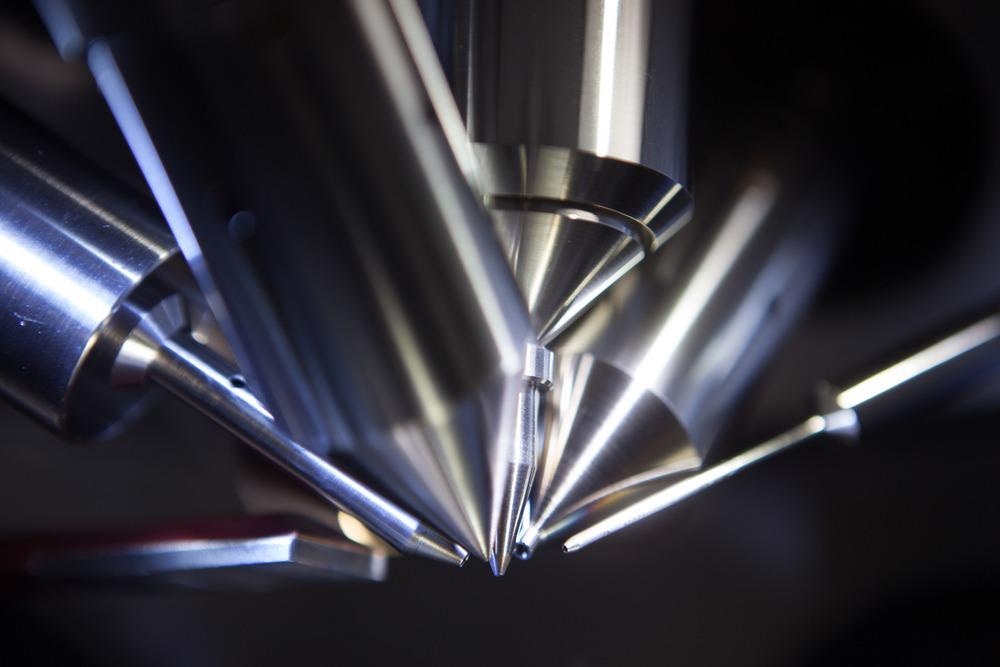In a study published recently in the journal Applied Materials Today, researchers have developed an effective nanomaterial for surface-assisted laser desorption/ionization (SALDI) mass spectrometry imaging (MSI). Here, Au-TiO2@GA nanospheres (Au-TiO2@GA NSs) were created by synthesizing gold nanoparticle (AuNP) altered TiO2 nanostructures and then modifying them with gallic acid (GA).

Study: Gold-TiO2@gallic acid nanospheres for enhanced surface-assisted laser desorption/ionization mass spectrometry imaging. Image Credit: Intothelight Photography/Shutterstock.com
The ground laser desorption/ionization (SALDI) surface was created by utilizing a gas-supported electrical injector to cover an ITO watch glass with Au-TiO2@GA NSs.
Mass Spectrometric Imaging
The mass spectrometry imaging (MSI) approach offers a lot of promise for seeing the patterns of different compounds in living tissues in a single trial. With its on-site and label-free features, MSI presents a novel study path from the perspective of geographic science for diagnostic purposes, pharmaceutical innovation, examining the nature of the sample, microbial engagement, food standards, and severe environmental assessment, among other applications.
Desorption electrospray ionization (DESI) MSI, secondary ionization mass spectrometry (SIMS) imaging, and matrix-assisted laser desorption/ionization (MALDI) MSI have all been used to explore the spatial data in diverse materials.
SALDI MSI Can Overcome Limitations of MALDI MSI
Conventional MALDI grids are commonly used to detect diverse lipids, peptides, and other biomolecular metabolites. However, the quantity and strength of identified species change depending on whether the ionic mode is positive or negative. Furthermore, sinapic acid (SA) is mainly employed for protein identification.
Nevertheless, many constraints in MALDI MS are difficult to overcome, such as severe interaction of matrix-related signals in the lower m/z region, signal inhibition of specific analytes, and probable sample depolarization when the wet matrix coating approach was used.
As a result, several new organic and inorganic compounds have been designed to increase the detecting sensitivity and accuracy of different indigenous metabolites in organs using MALDI MSI. Owing to its minimum noise and strong desorption/ionizing (DI) efficiency of particular analytes, surface-assisted laser desorption/ionization (SALDI) mass spectrometry (MS) has attracted great attention as an option to address the constraints associated with MALDI MSI.
Despite the fact that SALDI MS has been used to examine a large set of data in the past, the spectrum of cells that can be explored using SALDI MS imaging continues to be a challenge.
Furthermore, the majority of the SALDI MSI described performed in a manner comparable to MALDI MSI by spraying or sputtering nanoparticles onto the sample, comparable to MALDI MSI.
A major additional strategy for SALDI MSI is the imprints technique, which involves thawing frozen material and placing it on a SALDI surface for a limited period of time to improve chemical adhesion before gently washing off the tissue.
Advantages of Using TiO2 Matrices for SALDI MSI
SALDI MS has advanced dramatically, and the types of SALDI have grown in tandem along with the growth of nanoparticles.
Carbon materials, silicon-based nanoparticles, ferrous and metal oxide nanoparticles, and other inorganic nanoparticles have all been produced and used as SALDI matrices.
TiO2 nanoparticles have gotten a lot of interest because they have high UV absorbance, chemically stable characteristics, and chemical adjustment is simple to do to match the particular needs of surface DI.
TiO2 may absorb light particle wavelengths to form high-energy particles that can be transferred from the valence band to the conduction band, resulting in a covalent bond that can be employed to ionize particles via oxidation-reduction reactions.
In order to identify multiple chemicals from microorganisms, animals, and plants, a wide range of TiO2 based nanomaterials, including AuNP immobilized porous TiO2 film, Au nano-islands filled TiO2 nanostructures, nanostructured Au-modified TiO2 nanostructures, and TiO2-Au/graphene nanoparticles, have been developed.
Summary of the Research Findings
In this study, the team looked at a straightforward way to produce Au-TiO2@GA NSs, an extremely effective hybrid nanocomposite for SALDI MSI made of gold and titanium oxide.
It has the capacity to be broadly applicable for SALDI MSI of a wide variety of chemicals in both mammalian tissues and has the potential to be widely applicable.
Simple ligand-exchange methods were used to fabricate symmetric Au-TiO2@GA NSs, which were then coated on an ITO microscope slide using a gas-assisted electrical spraying technique for direct SALDI MSI analysis.
Compared to plain TiO2, Au-TiO2 nanomaterials, and regular MALDI matrices, Au-TiO2@GA NSs excelled in all of these in terms of decreased noise and good DI efficacy.
The high SALDI MS efficiency of Au-TiO2@GA NSs is mostly due to the synergistic effect of closely packed AuNPs and GA grafting, which results in a significant improvement in the substrate DI efficiency.
In the mouse brain, kidney, liver, and G. elata and potato tubers, spatial patterns of many indigenous components were found. These findings demonstrate the use of Au-TiO2@GA NSs as a flexible and beneficial nanostructure for the SALDI MSI of both plant and animal tissue types.
Continue reading: Manifesting Multidisciplinary Nanomedicine Research with the MMS.
Reference
Sun, R., Tang, W. and Li, B., (2022) Gold-TiO2@gallic acid nanospheres for enhanced surface-assisted laser desorption/ionization mass spectrometry imaging. Applied Materials Today, 26, p.101336. Available at: https://www.sciencedirect.com/science/article/pii/S235294072100384X?via%3Dihub
Disclaimer: The views expressed here are those of the author expressed in their private capacity and do not necessarily represent the views of AZoM.com Limited T/A AZoNetwork the owner and operator of this website. This disclaimer forms part of the Terms and conditions of use of this website.